Grow Bok Choy Indoors? Absolutely! Imagine fresh, crisp bok choy, ready to harvest right from your windowsill, even when the weather outside is frightful. Forget those sad, wilted greens at the grocery store – we’re about to embark on a journey to cultivate our own little indoor bok choy oasis.
Bok choy, also known as pak choi, has been a staple in Asian cuisine for centuries, gracing tables with its mild, slightly sweet flavor and impressive nutritional profile. From stir-fries to soups, this versatile vegetable adds a delightful crunch and a healthy boost to any meal. But what if you don’t have a sprawling garden or live in a climate that’s always bok choy-friendly? That’s where the magic of indoor gardening comes in!
In this DIY guide, I’ll share my favorite tricks and hacks to successfully grow bok choy indoors. We’ll cover everything from choosing the right container and soil to providing the perfect amount of light and water. Whether you’re a seasoned gardener or a complete beginner, these simple steps will empower you to enjoy fresh, homegrown bok choy year-round. Say goodbye to expensive, store-bought veggies and hello to a thriving indoor garden that nourishes both your body and your soul!
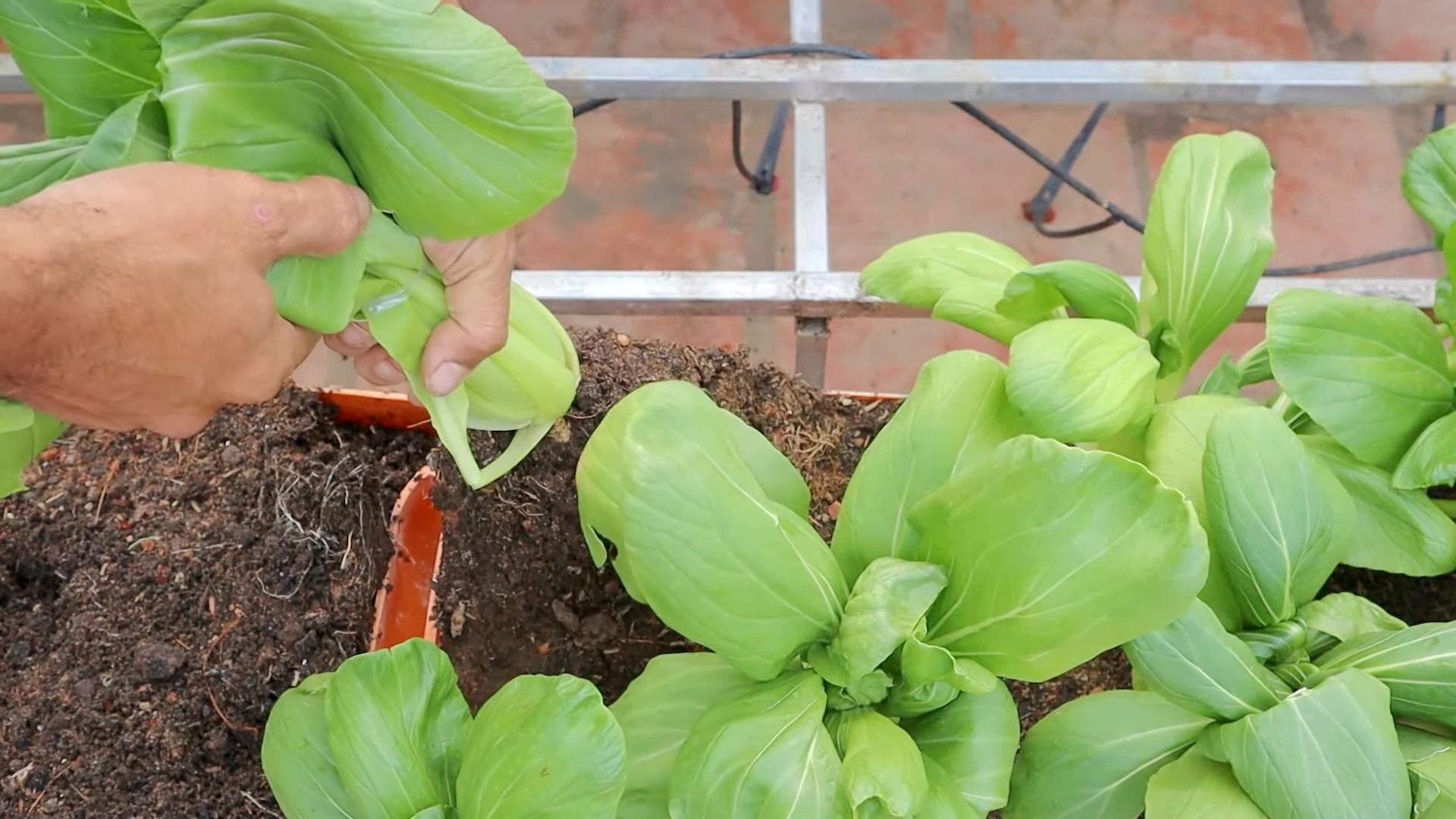
Growing Bok Choy Indoors: A Beginner’s Guide
Hey there, fellow plant enthusiasts! Ever thought about growing your own fresh, crisp bok choy right in your kitchen? It’s easier than you might think, and I’m here to guide you through the entire process. Forget those wilted, overpriced greens at the grocery store – let’s cultivate our own little bok choy paradise indoors!
Choosing the Right Bok Choy Variety
First things first, not all bok choy varieties are created equal when it comes to indoor growing. Some get HUGE, which isn’t ideal for a windowsill or grow tent. Here are a few of my favorite compact varieties that thrive indoors:
* Dwarf Bok Choy: As the name suggests, these are smaller and more manageable. They mature quickly, making them perfect for impatient gardeners (like me!).
* Baby Bok Choy: These are harvested when they’re young and tender, so you won’t need as much space. Plus, they’re incredibly delicious in stir-fries.
* Joi Choi: This variety is known for its heat tolerance, which can be a bonus if your indoor space tends to get a little warm.
What You’ll Need
Before we dive into the nitty-gritty, let’s gather our supplies. Here’s a checklist of everything you’ll need to successfully grow bok choy indoors:
* Bok Choy Seeds: Choose your preferred variety from the list above. Make sure they’re from a reputable source to ensure good germination rates.
* Seed Starting Tray or Small Pots: These are perfect for starting your seeds indoors.
* Seed Starting Mix: This is a light, airy soil mix that’s specifically designed for seedlings. Regular potting soil can be too heavy and compact.
* Potting Soil: Once your seedlings are ready to be transplanted, you’ll need a good quality potting soil.
* Grow Lights (Optional but Recommended): While bok choy can tolerate some shade, they’ll grow much better with supplemental lighting, especially during the winter months.
* Pots or Containers: Choose pots that are at least 6 inches deep and wide to give your bok choy room to grow.
* Watering Can or Spray Bottle: For gentle watering.
* Fertilizer: A balanced liquid fertilizer will help your bok choy thrive.
* Spray Bottle with Water: For misting the leaves.
Step-by-Step Guide to Growing Bok Choy Indoors
Alright, let’s get our hands dirty! Here’s a detailed guide to growing bok choy indoors, from seed to harvest:
1. Starting Your Seeds
* Prepare Your Seed Starting Tray: Fill your seed starting tray or small pots with seed starting mix. Gently pat it down to remove any air pockets.
* Sow the Seeds: Sow 2-3 seeds per cell or pot, about ¼ inch deep.
* Water Gently: Water the soil gently using a spray bottle or watering can. You want to moisten the soil without disturbing the seeds.
* Provide Warmth and Light: Place the seed starting tray in a warm location (around 70-75°F) and under grow lights or near a sunny window.
* Keep the Soil Moist: Keep the soil consistently moist, but not soggy. Check the soil daily and water as needed.
* Wait for Germination: Bok choy seeds typically germinate within 5-7 days.
2. Thinning the Seedlings
* Identify the Strongest Seedling: Once the seedlings have emerged, observe them for a few days and identify the strongest one in each cell or pot.
* Thin the Weaker Seedlings: Using small scissors or your fingers, carefully snip or pinch off the weaker seedlings at the soil line. This will give the remaining seedling more room to grow.
3. Transplanting the Seedlings
* Prepare Your Pots: Fill your pots or containers with potting soil, leaving about an inch of space at the top.
* Gently Remove the Seedlings: Carefully remove the seedlings from the seed starting tray or pots. Be gentle to avoid damaging the roots.
* Plant the Seedlings: Plant each seedling in its own pot, making sure the top of the root ball is level with the soil surface.
* Water Thoroughly: Water the seedlings thoroughly after transplanting.
* Provide Adequate Light: Place the pots under grow lights or near a sunny window. Bok choy needs at least 6 hours of sunlight per day.
4. Caring for Your Bok Choy
* Watering: Water your bok choy regularly, keeping the soil consistently moist but not soggy. Overwatering can lead to root rot. Check the soil moisture by sticking your finger about an inch into the soil. If it feels dry, it’s time to water.
* Fertilizing: Fertilize your bok choy every 2-3 weeks with a balanced liquid fertilizer. Follow the instructions on the fertilizer label.
* Light: Bok choy needs at least 6 hours of sunlight per day. If you’re not getting enough natural light, supplement with grow lights.
* Temperature: Bok choy prefers temperatures between 60-70°F. Avoid exposing them to extreme temperatures.
* Humidity: Bok choy prefers moderate humidity. You can increase humidity by misting the leaves with water or placing a tray of water near the plants.
* Pest Control: Keep an eye out for pests like aphids and cabbage worms. If you spot any pests, treat them with insecticidal soap or neem oil. I’ve found that a strong blast of water from the hose can also dislodge aphids.
* Air Circulation: Good air circulation is important to prevent fungal diseases. Make sure your plants have enough space between them and that there’s good airflow in the room. A small fan can help.
5. Harvesting Your Bok Choy
* Harvest Time: Bok choy is typically ready to harvest in 45-50 days from planting.
* Harvesting Method: You can harvest the entire plant at once by cutting it off at the base, or you can harvest individual leaves as needed. I prefer harvesting individual leaves because it allows the plant to continue producing for a longer period.
* Enjoy Your Harvest: Wash your bok choy thoroughly and enjoy it in salads, stir-fries, soups, or any other dish you like!
Troubleshooting Common Problems
Even with the best care, you might encounter a few challenges along the way. Here are some common problems and how to address them:
* Yellowing Leaves: This can be caused by overwatering, underwatering, nutrient deficiencies, or pests. Check the soil moisture, fertilize your plants, and inspect them for pests.
* Leggy Seedlings: This is usually caused by insufficient light. Make sure your seedlings are getting enough light, either from a sunny window or grow lights.
* Slow Growth: This can be caused by a variety of factors, including insufficient light, nutrient deficiencies, or poor soil. Make sure your plants are getting enough light, fertilize them regularly, and use a good quality potting soil.
* Pests: Aphids, cabbage worms, and other pests can attack bok choy. Treat them with insecticidal soap or neem oil.
Tips for Success
Here are a few extra tips to help you succeed in growing bok choy indoors:
* Start with Good Quality Seeds: This is the foundation of a successful harvest.
* Use a Good Quality Potting Soil: This will provide your plants with the nutrients they need to thrive.
* Provide Adequate Light: Bok choy needs at least 6 hours of sunlight per day.
* Water Regularly: Keep the soil consistently moist, but not soggy.
* Fertilize Regularly: This will help your plants grow strong and healthy.
* Monitor for Pests: Catching pests early can prevent them from causing serious damage.
* Don’t Be Afraid to Experiment: Gardening is a learning process. Don’t be afraid to try new things and see what works best for you.
Growing bok choy indoors is a rewarding experience that allows you to enjoy fresh, healthy greens year-round. With a little bit of care and attention, you can have a thriving bok choy garden right in your own home. Happy gardening!
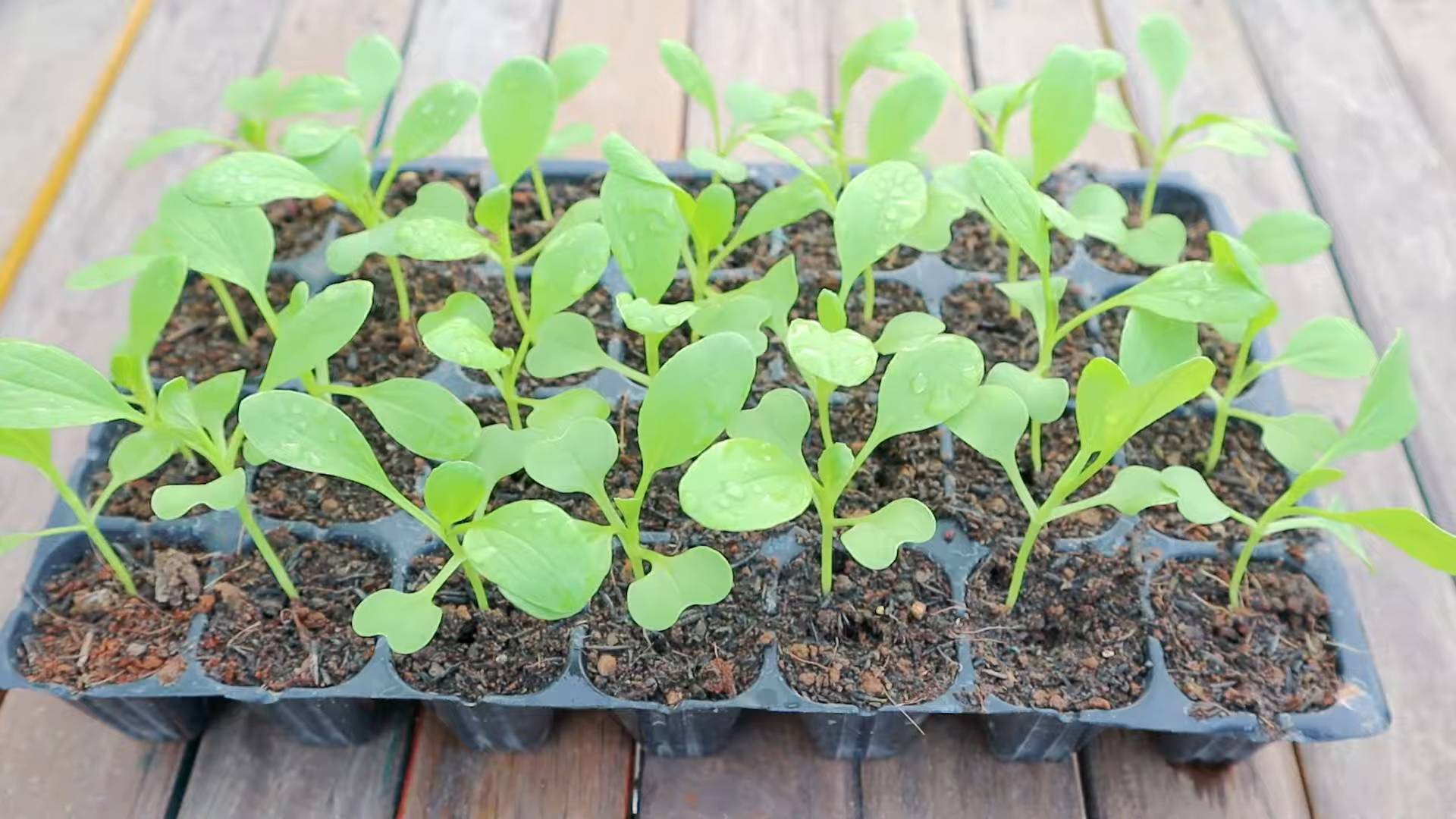
Conclusion
So, there you have it! Growing bok choy indoors is not only achievable, but it’s also a rewarding experience that brings fresh, vibrant greens right to your kitchen. We’ve walked through the essential steps, from selecting the right seeds and containers to providing optimal lighting and care. But why is this DIY trick a must-try?
First and foremost, it offers unparalleled access to fresh, healthy bok choy, regardless of the season or your geographical location. Imagine having crisp, delicious bok choy readily available for stir-fries, soups, salads, or even a quick and nutritious side dish. No more last-minute trips to the grocery store or settling for wilted, less-than-perfect produce. You control the quality and freshness from seed to plate.
Secondly, growing bok choy indoors is incredibly space-efficient. Whether you live in a sprawling suburban home or a cozy apartment, you can cultivate your own little bok choy garden on a windowsill, balcony, or under grow lights. It’s a fantastic way to maximize your space and bring a touch of nature indoors.
Thirdly, it’s a sustainable and eco-friendly choice. By growing your own bok choy, you reduce your reliance on commercially grown produce, which often involves long-distance transportation, chemical fertilizers, and pesticides. You’re contributing to a healthier planet and reducing your carbon footprint.
But the benefits don’t stop there. Growing bok choy indoors is also a therapeutic and educational activity. It’s a chance to connect with nature, learn about plant life cycles, and develop your gardening skills. It’s a great project for families, children, or anyone looking for a relaxing and fulfilling hobby.
Ready to take your indoor bok choy growing to the next level? Consider these variations:
* Succession Planting: Plant new seeds every few weeks to ensure a continuous harvest of fresh bok choy.
* Different Varieties: Experiment with different varieties of bok choy, such as Shanghai bok choy (with its pale green stalks) or baby bok choy (for smaller, more tender leaves).
* Hydroponics: Explore hydroponic growing methods for a soil-free and highly efficient way to cultivate bok choy indoors.
* Companion Planting: Grow bok choy alongside other compatible herbs and vegetables, such as basil, cilantro, or lettuce, to create a thriving indoor garden ecosystem.
We’ve provided you with the knowledge and tools to embark on your indoor bok choy growing adventure. Now, it’s your turn to put these tips into practice and experience the joy of harvesting your own fresh, homegrown greens.
Don’t be afraid to experiment, adapt, and personalize your approach to suit your specific environment and preferences. Remember, gardening is a journey of learning and discovery.
We are confident that you will find success in growing bok choy indoors. We encourage you to try this DIY trick and share your experiences with us! Tell us about your successes, challenges, and any unique tips or tricks you discover along the way. Share your photos and stories on social media using #IndoorBokChoy or tag us in your posts. We can’t wait to see your thriving indoor bok choy gardens! Happy growing!
Frequently Asked Questions (FAQs)
What are the best varieties of bok choy to grow indoors?
While most bok choy varieties can be grown indoors, some are better suited for container gardening due to their size and growth habits. Baby bok choy varieties, such as ‘Toy Choi’ or ‘Mei Qing Choi,’ are excellent choices because they mature quickly and remain relatively compact. Shanghai bok choy, with its pale green stalks and mild flavor, is another popular option. Experimenting with different varieties can be fun, but starting with smaller, faster-growing types is generally recommended for beginners.
How much light does bok choy need when grown indoors?
Bok choy requires at least 6 hours of direct sunlight per day to thrive. If you don’t have a sunny windowsill, you’ll need to supplement with artificial grow lights. Fluorescent or LED grow lights are both effective options. Position the lights a few inches above the plants and keep them on for 12-14 hours per day. Monitor your plants closely and adjust the lighting as needed to prevent them from becoming leggy or stunted.
What type of soil is best for growing bok choy in containers?
Bok choy prefers well-draining, nutrient-rich soil. A good potting mix specifically formulated for vegetables is ideal. You can also create your own mix by combining equal parts of potting soil, compost, and perlite or vermiculite. The compost provides essential nutrients, while the perlite or vermiculite improves drainage and aeration. Avoid using garden soil, as it can be too heavy and may contain pests or diseases.
How often should I water my indoor bok choy plants?
Water your bok choy plants regularly, keeping the soil consistently moist but not waterlogged. Check the soil moisture level daily by sticking your finger about an inch into the soil. If it feels dry, it’s time to water. Water deeply, allowing excess water to drain out of the bottom of the container. Avoid overhead watering, as this can lead to fungal diseases.
What are some common pests and diseases that affect indoor bok choy?
While indoor plants are generally less susceptible to pests and diseases than outdoor plants, they can still be affected. Common pests that may attack bok choy include aphids, spider mites, and whiteflies. Regularly inspect your plants for signs of infestation and treat them promptly with insecticidal soap or neem oil. Fungal diseases, such as powdery mildew and downy mildew, can also be a problem, especially in humid environments. Ensure good air circulation around your plants and avoid overwatering to prevent these diseases.
How long does it take to harvest bok choy grown indoors?
Bok choy typically matures in 45-50 days from seed. However, you can start harvesting the outer leaves as soon as they are large enough to eat, usually around 30 days. This cut-and-come-again method allows you to enjoy a continuous harvest over several weeks. To harvest, simply cut the outer leaves near the base of the plant, leaving the inner leaves to continue growing.
Can I grow bok choy from scraps?
Yes, you can regrow bok choy from the base of the plant. Place the base in a shallow dish of water, ensuring that the cut end is submerged. Change the water every day or two. After a few days, you should see new roots and leaves emerging. Once the roots are well-developed, you can transplant the bok choy into a pot filled with soil. While regrowing bok choy from scraps is a fun experiment, the resulting plants may not be as productive as those grown from seed.
How can I encourage my bok choy to grow faster indoors?
To encourage faster growth, ensure your bok choy plants receive adequate light, water, and nutrients. Provide at least 6 hours of direct sunlight or 12-14 hours of artificial light per day. Water regularly, keeping the soil consistently moist. Fertilize your plants every two weeks with a balanced liquid fertilizer. Maintaining a consistent temperature between 60-70°F (15-21°C) can also promote faster growth.
Is it possible to grow bok choy indoors year-round?
Yes, with proper care and attention, you can grow bok choy indoors year-round. The key is to provide consistent growing conditions, including adequate light, water, and nutrients. If you live in an area with cold winters, you may need to supplement with artificial grow lights to ensure your plants receive enough light. You may also need to adjust your watering schedule depending on the humidity levels in your home.
What are the nutritional benefits of growing and eating bok choy?
Bok choy is a nutritional powerhouse, packed with vitamins, minerals, and antioxidants. It’s an excellent source of vitamins A, C, and K, as well as folate, calcium, and potassium. Bok choy is also low in calories and high in fiber, making it a healthy and delicious addition to any diet. Growing your own bok choy ensures that you’re getting the freshest and most nutritious greens possible.

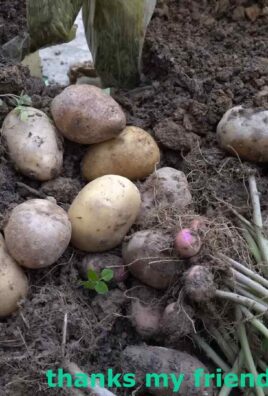
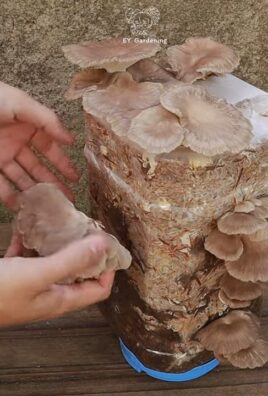
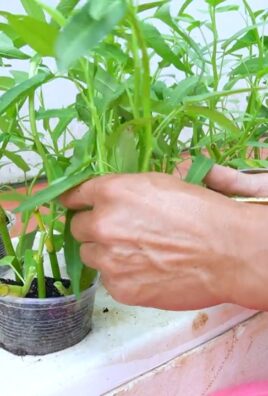
Leave a Comment